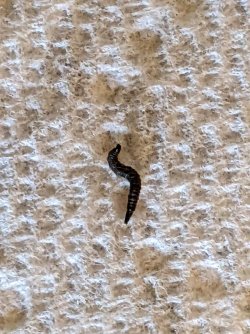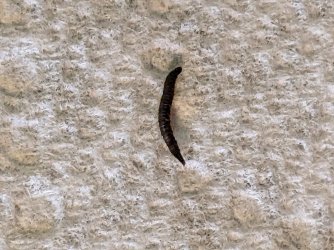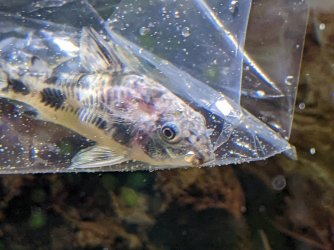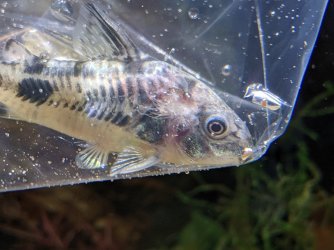Hello there. I hope that you might be able to assist me. This morning when I was tending to my aquariums I found a dark worm crawling along my substrate. I promptly plucked him out. Then I noticed that one of my Corydoras was hiding and had a wound on the side of her body and it has some stringy/cottony growth over it. I currently have her acclimating to my hospital tank and I'm trying to decide on what medication to use. I have API E.M, general cure, fin and body, pimafix and melafix. I also have some fritz fungal medicine to be delivered at some point today. After removing her I found a second worm that I plucked out and took pictures of. Can anyone help me find out what kind of worm it is and if it injured the Cory?
I've only found the two worms and I'm watching the tank like a hawk in case there's more.
29 g aquarium with aqueon 20 quiet flow (this tank is about 3-4 months old)
pH 7.4
0 ppm ammonia, 0 ppm nitrites, 5 ppm nitrates
Stocking: 1 endler guppy, 1 black neon tetra, 3 Corydoras catfish, 3 otocinclus catfish, 5 Kuhli Loaches and soon to be 5 platys
Moderately planted, added duckweed within the past 2 weeks from the pet store that I treated with an alum powder bath before adding
I've only found the two worms and I'm watching the tank like a hawk in case there's more.
29 g aquarium with aqueon 20 quiet flow (this tank is about 3-4 months old)
pH 7.4
0 ppm ammonia, 0 ppm nitrites, 5 ppm nitrates
Stocking: 1 endler guppy, 1 black neon tetra, 3 Corydoras catfish, 3 otocinclus catfish, 5 Kuhli Loaches and soon to be 5 platys
Moderately planted, added duckweed within the past 2 weeks from the pet store that I treated with an alum powder bath before adding





